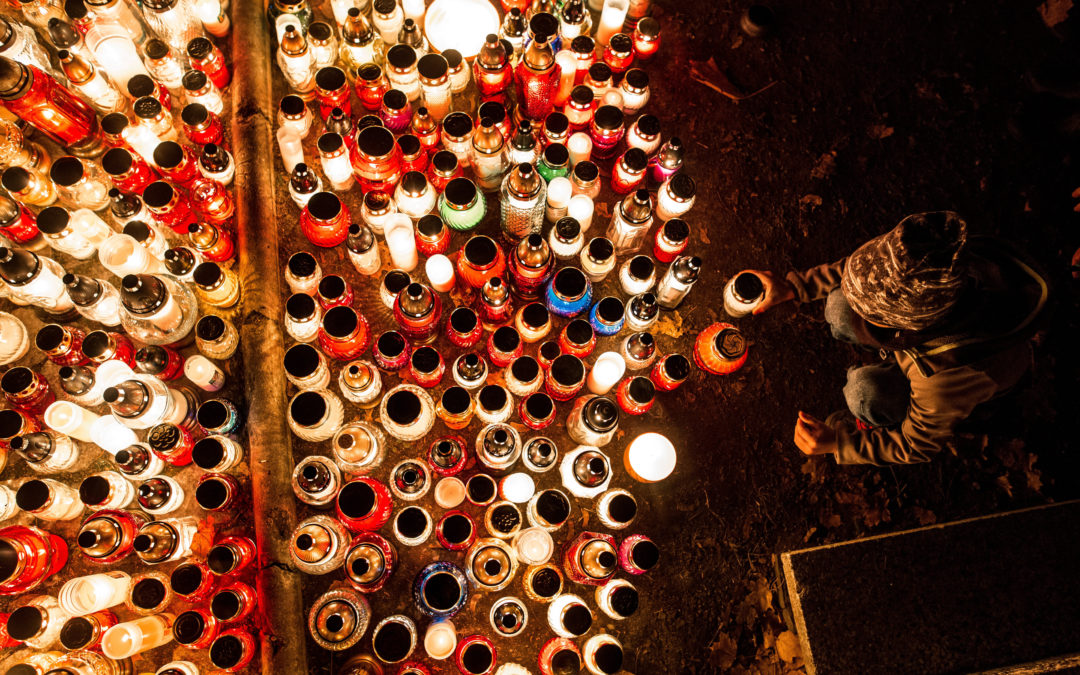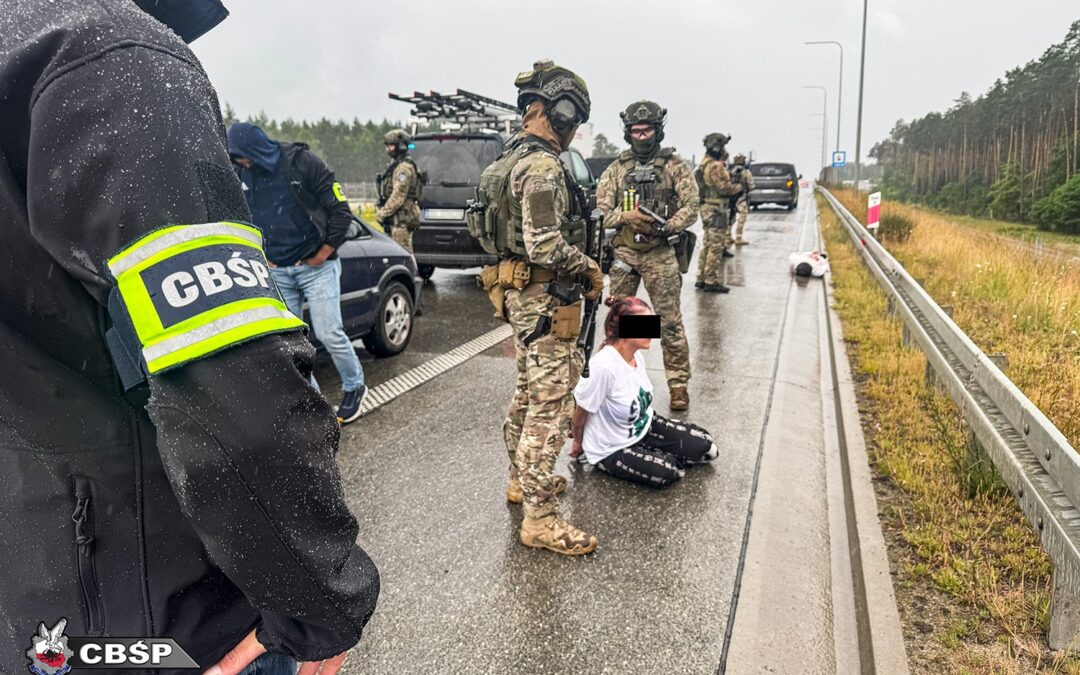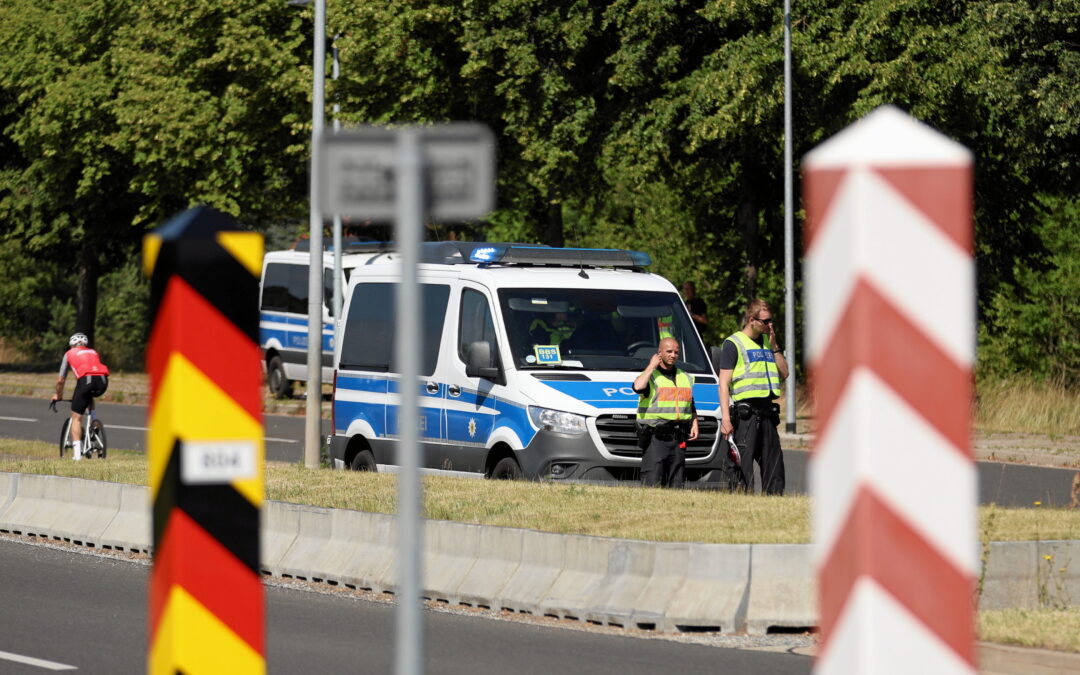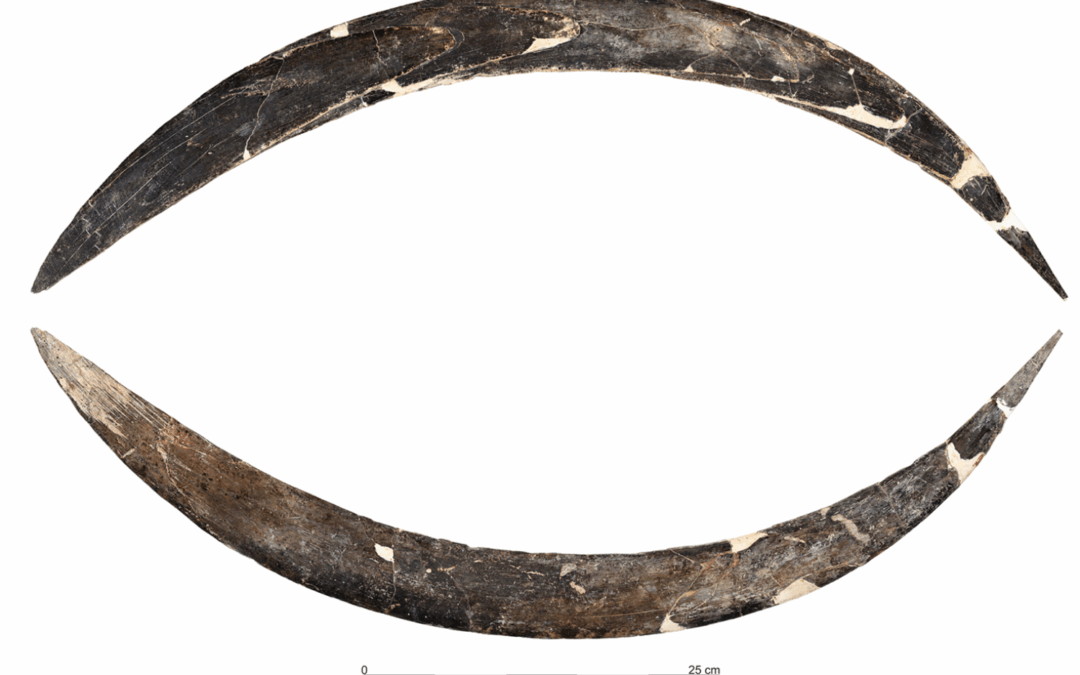By Stanley Bill
All Saints’ Day is the most Polish of holidays. If truth be told, Croats, Slovaks, Slovenes, Hungarians, Romanians, Lithuanians and even Catholic Germans celebrate the day in similar fashion. Yet I can never fully dispel the sense that Poland is the spiritual home of the festival – that here the day unfolds in some special way. The country grinds to a halt on a public holiday that sees most people return to their family homes to gather around the graves of their ancestors. They clean tombstones, sweep the earth around them, and leave fresh flowers and votive candles. In the evening, they return to packed cemeteries. They walk among crowds in the glow of the flickering candles, huddled together around clusters of light in the darkness.
I first experienced All Saints’ Day during my first year in Poland – in 2001, in the eastern city of Lublin. I remember driving with English friends right across the country from Katowice to get there, passing many cemeteries along the way. We saw cars lining the streets, people crowding around graves, sweeping and cleaning, praying and laying wreaths, whole families together. We didn’t fully understand the significance of the day, so we asked somebody at a petrol station to explain it to us. When we got to Lublin, we went to look for a cemetery after nightfall. It was cold. I asked a shop assistant for directions, miming prayers and crosses, as I didn’t yet know the word cmentarz.
We were deeply moved by what we found there: coloured candles, flowers, fallen leaves, and crowds of people in their best clothes. A sea of light around a memorial for the victims of fascism. One image sticks in my mind. A mother encouraged her child with a gentle pat on the back. Dressed in a long coat and a beret, the little girl knelt down with a lit candle and placed it among the multitude to join the flames of remembrance. My friends and I strolled among the graves with the people. It was not an atmosphere of morbidity, but of calm reflection. Since that evening, I have returned many times to many cemeteries in Poland on the first of November.
Pagan roots
All Saints’ Day is a Catholic holiday, and prayer is an important part of it for many Poles. But the festival also represents one of several remnants of pre-Christian Poland that still make their presence felt in the contemporary culture. As in much of Europe, the holiday replaced a pagan festivity of the dead that once took place at the same time of year. In Polish culture, the connection remains vivid. In the nineteenth century, the Romantic poet Adam Mickiewicz put the pagan rite of “Forefathers’ Eve” (Dziady) at the very centre of his national drama of the same name. He presented the ritual of communing with the dead as the primal scene of Polish culture.
Mickiewicz’s poetic work begins in a backwoods chapel somewhere in rural Lithuania. The local peasant community is gathered around a coffin. A mysterious wizard figure commands that there be no lamps or candles lit, and that the windows of the chapel be covered with shrouds. Not even the pale light of the moon is to disturb the sanctuary during the sacred rite. The people follow the wizard’s commands, and begin to chant: “All is dark, all is still; come what will, come what will”. One after another, the ghosts of recently departed people appear before them. The nation gathers around a collective tomb in the dark, communing with the ghosts of their forefathers and mothers.
In contemporary Poland, there is a small-scale revival – or rather a reconstruction – of the old traditions among groups of neo-pagans. On one All Saints’ Day in Kraków, I joined a few local enthusiasts on Krak’s Mound, a pre-Christian burial mound with views over the city and the nearby Podgórze Cemetery. There was no particular ritual, just a hearty gathering of young people. From above, the lights of the coloured candles in the cemetery twinkled like stars between the trees, flowing together into blazes of white, red and orange around the public memorials. The young people drank beer up on the mound, as families walked among the graves below.
Standing together
For those still dealing with fresh losses in the present, All Saints’ is a time of very personal grief. But the holiday also has a symbolic, collective dimension. Poland seems to specialise in memory and mourning. All communities live on the bones of those who have lived and died before them, but in Poland this reality takes on special significance. The historical threat to the national community over the last few hundred years has often strengthened the sense of intergenerational solidarity. In its idealised form, the community appears as a great chain of people – past, present, and future – who are bound together in resistance to political oppression and to the ultimate reality of death.
In certain moments, these different orders – the personal and the historical – come together with great power. I was living in Kraków when Pope John Paul II passed away in 2005. His life had become a symbol to many of a form of Polishness, of the struggle against communism, and of a national community rooted in religion and tradition. His death marked the end of a historical phase. The outpouring of grief that followed was partly a response to the inexorable changes of the post-1989 transition. The pluralism of modern democratic life meant that certain models of collective identity would no longer hold.
On the night of his passing, the deep toll of the Sigismund Bell of Wawel Cathedral echoed across the old town. Crowds of Cracovians came out onto the streets, returning in ever greater numbers over the nights that followed. I sensed an intense need among people simply to be together, as warm bodies in a mass, young and old, standing in silence in the light of candles.
I still sense the same need on All Saints’ Day, from the grand urban cemeteries of Kraków and Warsaw to the muddy graveyards of rural Podkarpacie: to stand together in solidarity with those who have passed; to stand together against death.
Main Image Credit: Jakub Orzechowski / Agencja Gazeta.

Stanley Bill is the founder and editor-at-large of Notes from Poland. He is also Professor of Polish Studies and Director of the Polish Studies Programme at the University of Cambridge. He has spent more than ten years living in Poland, mostly based in Kraków and Bielsko-Biała.
He is the Chair of the Board of the Notes from Poland Foundation.




















